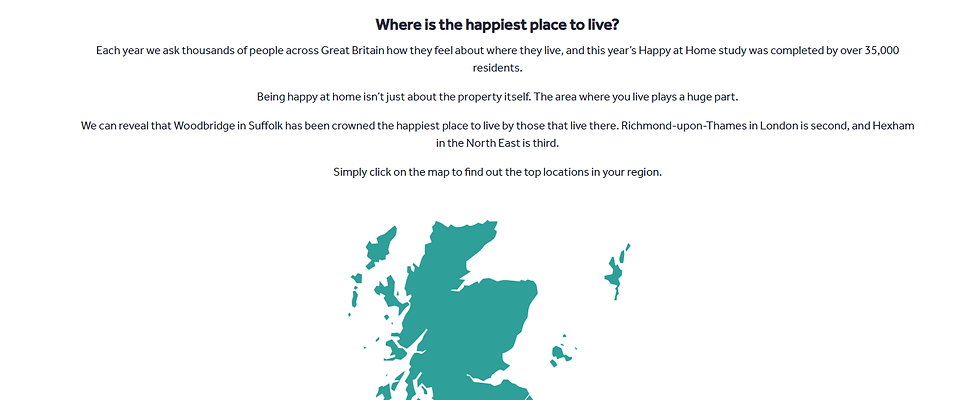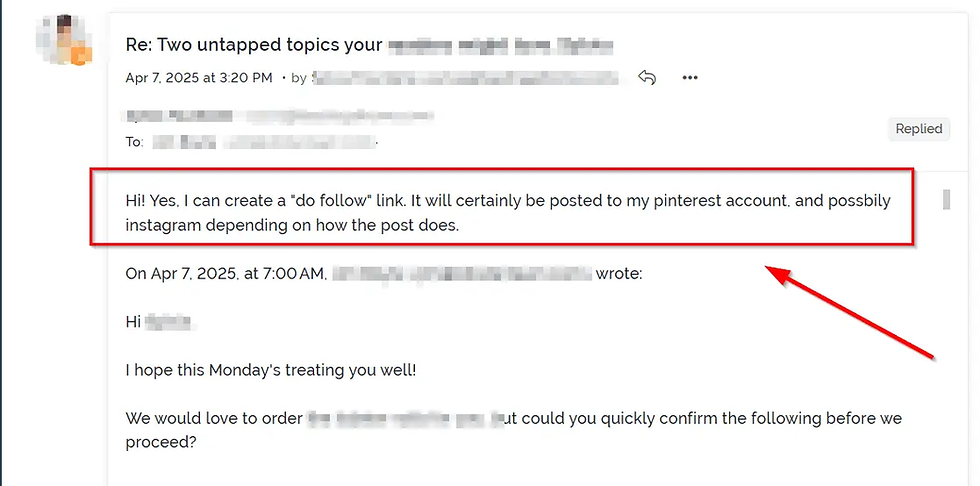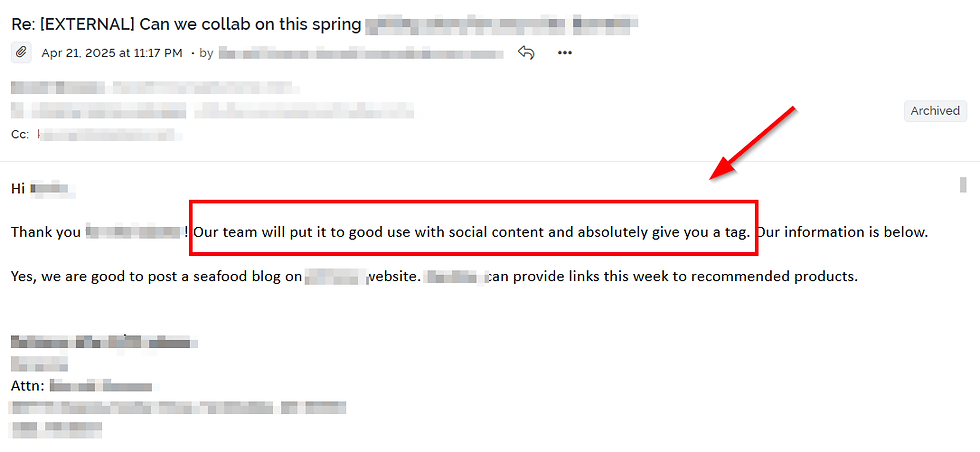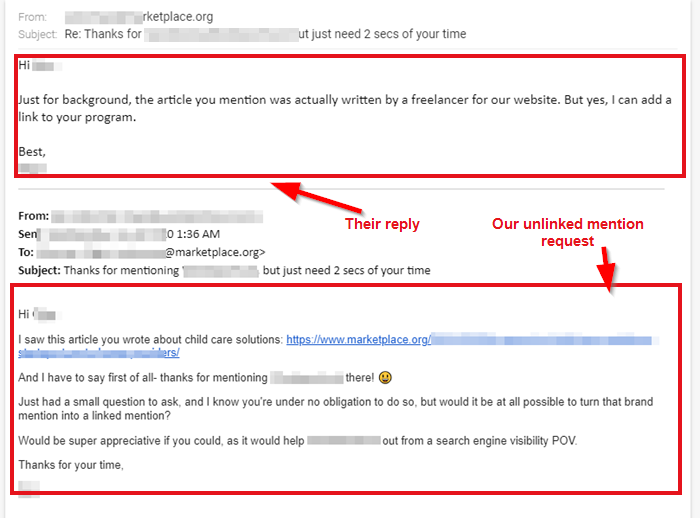How to Leverage Social Media for Link Building
- Measure Studio

- Aug 7
- 12 min read
Updated: Aug 8
What do link building and social media management have in common? At first glance, these two areas of digital marketing seem disconnected. But if you play your cards right, they can come together to help you boost brand awareness.
Link building is a highly intricate tactic considered to be the cornerstone of SEO. While building backlinks seems pretty straightforward, it requires a lot of strategy to execute correctly. However, if done according to best practices, it can signal to search engines that your business’ website is trustworthy and authoritative.
By building quality backlinks, you can not only build credibility in your niche but also drive referral traffic to your website to boost its rankings.
This begs the question: How exactly does social media play a role in helping companies build better backlinks?
We take a look at how going viral, leveraging social media analytics, and even activities like using forums can help with high-quality link building.
The strategic value of social media in link building
Having a strong reach across social media platforms, third-party websites and forums is one way to improve a company’s brand presence.
These can all act as ways of increasing the volume of your brand mentions and improving the success of your digital marketing efforts.
These mentions are then used as signals of sorts by Google and LLMs to determine if a brand is related to a question asked on search engines.
We are increasingly seeing evidence that SEO is reaching a point where it is no longer just about optimizing for search engines like Google, but about increasing your overall digital footprint, and having signals which indicate that you're an actual “brand”.
Think of it this way: if your company’s name is a keyword, the more it's mentioned in relevant content, cited through contextual pages, and other spaces, the more likely it will be picked up by search engines and LLMs and AI Overviews - in essence turning modern Search Engine Optimization more into “Search Everywhere Optimization.”
It’s not to say that having good, SEO-optimized content and quality backlinks is not important, it's just that we're now moving towards an era where “brand” is another layer of ranking factors on top of everything else.
Measuring the impact of social media on link profiles
Measuring (and proving) how your social media activity is impacting your link profile may sound tedious, considering social media presence will often only indirectly impact it. However, there are things you can put in place to make it more effective.
You should look at this in 3 stages:
Measure engagement
Track link acquisition and the volume of acquisition
Track actual business outcomes
Of course, it starts with capturing engagement signals on-platform. Saves, shares, comments, watch-through rates and so on. These numbers reveal which posts genuinely strike a chord with audiences.

Measure Studio’s analytics can especially help here, as you’ll want to see reports which track these metrics across multiple channels.
This is really important if you’re testing out different types of social content, to see what drives the most engagement or particularly resonates with your main target audience.
Now, tie this with link acquisition. This can be tricky, but you should start by adding UTM tags to any assets you're sharing on social media, which is attribution you’ll need later. After that, you can measure the referring domain growth with Semrush or Ahrefs.

Going back to your engagement stats, you can then start to plot these metrics for each page - showing engagement stats/shares and then the amount of links that have been acquired for that page.
Finally, pull the journey through to business outcomes in GA4 with social-referral sessions, assisted conversions and eventual revenue.

Framing results this way keeps the analysis grounded; it shows how attention becomes links and how links or social referral traffic, in turn, become money.
There are multiple ways for content to break free from the algorithm and go viral. Common factors that help give content that leg up include inspiring strong emotions, which prompts users that come across it to share.
Content also needs to be relatable, unique, and posted at the right time in order for it to go viral. However, it is important to remember that virality is often short-lived. While it can create a spike in traffic and links, there needs to be more focused efforts in your campaigns for sustained authority and link-building efforts.
Is the dress black and blue, or is it white and gold? One of the most notable viral pieces of content in the past decade was the infamous online debate surrounding a photo questioning the color of a Roman’s dress.

This question about the dress being “white and gold or blue and black?” saw over 3.5 million visitors view the dress on their site in 48 hours.
It was covered on over 150 global news networks, and the dress itself was sold out in under 34 minutes of restocking it on the site. Now, that's an impact! It's an extreme example, but shows the power of viral social content.
Steps to engineer viral content
Brainstorming Ideas: When content teams are coming up with suitable ideas, look at those that are tied to trending topics or industry pain points. It needs to evoke emotion in your audience - be it humor, a polarizing/controversial opinion, or something else.
Crafting Content: In order for your audience to engage, the content itself needs to be visually engaging. To get the attention, you want to use appealing pieces of content, not just walls of text. Make sure to make use of alternative content formats like videos, interactive tools or online calculators.
RightMove’s “Happy at Home” interactive map is a prime example of this - which they update every year, based on fresh survey data.

Encouraging User Participation: Posting content is sometimes not enough to get the viral gears working - so you can also urge your audience to interact with your content. Frame your content as a challenge, a contest, or make the campaign itself based on user-generated content (UGC) to keep them interested.
Jet2’s “Nothing Beats a Jet2 Holiday” TikTok meme, started off as an unofficial humorous thing users did on TikTok, where they would overlay holiday mishaps, with the Jet2 jingle.
This ended up being used in over 25,000 posts - and Jet2 decided to jump on the trend and ran a competition - offering a £1,000 holiday-voucher prize for the funniest entry, turning an organic meme into a formal contest.
Because the craze was news-worthy as well as entertaining, mainstream outlets rushed to explain it, and Jet2 saw a spike in media coverage on sites like the Guardian, Tech Advisor and Tyla.
Amplifying viral content on social platforms
Most brands utilize the social media platforms that their audience frequents. This knowledge can help tailor strategies to encourage engagement and amplify content that is doing well on other, lesser-used platforms.
For example, if you mainly use LinkedIn, the audience is more along the lines of a B2B customer base - or if you’re using Instagram, you need to prioritize visual storytelling.
To boost interest, brands can leverage social proof and influencer engagement to amplify the content’s reach.
Just like Oatly’s tongue-in-cheek billboard campaign, it ended up driving even more social engagement, media coverage and link acquisition.
Collaborating with influencers and crossover sector brands
Identifying the right partners
Double the audience means double the reach, which then doubles the engagement of your content pieces. But this doesn’t mean that they’re all your target audience.
To find the right partners to collaborate with, you need to lay out the goals you want to achieve from the collaboration. Your objectives should include brand awareness, product launches, and new audiences. These need to be aligned with the type of influencer or brand that most suits your audience.
There are several tools that brands can use to narrow down the viable options of influencers and brands by looking at their authority, audience overlap, and engagement metrics.
Co-branded campaigns and content creations
There are many types of content that can boost visibility and go viral for you and your brand. Brands can join together to create joint blog posts, interviews, social media takeovers, or even release e-books.
It can create immersive experiences for both audiences, and you can share information that is beneficial for them, too.
Cross-promotion tactics could even be as simple as starting with expert-driven guest posting - contributing content to brands with crossover audiences, which gets you backlinks, but can also drive social engagement.
Our brand recently collaborated with Mobile Text Alert - a business SMS solution, and created an in-depth piece of content that illustrated how SEO and SMS can work in tandem with each other.
We’ve also built relationships with a number of influencers and brands in the BBQ and grilling space, on behalf of one of our food brand clients.
Just like this example below, where a simple outreach email landed us a partnership with an influential food blog that had over 1 million visitors per month.

Or a grilling company we reached out to and agreed to publish a piece of content from us, but also wanted to produce social content using some of the client’s product. Which is a major catch when that grilling company has over 200,000 Instagram followers and over 600,000 Facebook followers.

Best practices for influencer and brand collaboration
For a partnership to work sufficiently, there needs to be allocations made to ensure that both parties achieve their outcomes and leave the collaboration satisfied.
Objectives and goals should be aligned from the get-go to avoid any misalignment or setbacks later.
Then, divide creative and technical duties. If the number of collaborations means a number of landing pages, blog posts and digital PR campaigns (and neither partner can spare the time for deep SEO), outsource the nuts-and-bolts work (keyword research, on-page tweaks, link outreach) to a specialist via a white-label SEO reseller program.
Bring the reseller into the kickoff call, agree on rules, and share one reporting dashboard; that lets the collaboration stay focused on strategy and creative while SEO tasks run quietly in the background.
Transparency is important, which includes disclosing paid partnerships according to the regulations of the various platforms utilized.
Measuring metrics pertaining to the collaboration campaign can help determine how successful the campaign is for both parties. If it drives a lot of sales, it then tells you its worth pursuing more collaborations with that brand later down the road.
When conducting campaigns with collaborators, it's important to be wary of influencer fatigue, which is where audiences are skeptical of influencers; this can affect the impact of the co-branded campaign.
On the flip side, when you select a brand or influencer that is highly trusted by a particular target audience, it can act as a force multiplier. Andy Peacock from Sensational Brands, appeared on The Growth Cure podcast, and discussed this aspect of leveraging trust from an influencer’s audience.
Using social listening to turn mentions into links
Social media is a crucial tool for brand awareness, especially for smaller and region-based businesses. According to a study done by Synup, approximately 78% of local businesses rely on these platforms to improve brand awareness.
This is where social listening comes into play - monitoring brand or product mentions or key topics relating to your business.
Setting up social listening workflows
Utilizing tools with this feature can help with surfacing unlinked brand or product mentions (or mentions of your competitor) across social media or third party websites. For the purpose of link building, you want to focus on high authority sites, niche-relevant blogs and news sites.
You will also want to be efficient with your time if you’re going to be sending outreach campaigns and filter out “junk sites” based on very low domain metrics like Domain Rating, Domain Authority, or domain-level traffic.
Outreach and conversion tactics
The next step is to turn these opportunities into links. The outreach message needs to be relevant, value-driven, and clear that you’ve done your research.
Sometimes it can just be kept very simple like the below example, it just depends on how many hoops you think you need to go through, to get the link.

Always thank the site for citing your brand, and explain how linking to your brand or some piece of relevant content is beneficial for their readers.
When cultivating this relationship, it is good practice to offer some value. Suggest a helpful resource, give them something for free in exchange, or share their content on your channels as a way of reciprocating.
Even if you don’t convert the brand mention into a link, it's not the end of the world, as brand mentions will still have some sort of cumulative effect on your ability to appear in AI Overview or LLMs. (more on this later).
Measuring the impact with social listening
There are several metrics to track, apart from the volume of brand mentions and the tone in which they were mentioned (sentiment analysis).
You also want to look at tracking the link acquisition volume from your brand mention outreach, as well as referral traffic from those converted mentions.
These analytics will help refine future social listening and outreach strategies.
Top forums and community-driven link building
Forums and communities are an excellent place to build brand awareness, drive branded search, and build community trust.
Like social media platforms, the links placed on these sites tend to be no-follow links, meaning that they generally will not pass any sort of SEO value. However, contextual links on the right forums could still help drive referral traffic and clicks.
Not to mention, since forums and platforms like Reddit and Quora appear so prominently in the SERPs - the more your brand or its content is mentioned there, the more likely it will be picked up by AI/LLMs and appear in those searches as well.
Reddit strategies
When using Reddit, you need to first identify relevant subreddits to contribute to. The user base and mods will likely have a no-nonsense policy to the information being shared in these groups.
After deciding on the subreddits you want to share content and information on, you must lead with a value-driven approach to your contributions and fully read and understand the FAQs and policies about posts being made.
Subreddit mods have cracked down on link insertions to prevent spam and promote user experience. When including links on Reddit, you need to make sure that they add value to the post and are not overly promotional.
If applicable, and you’re sharing links from your own site, be sure to disclose that and the reason why you're sharing the link, and how it helps the credibility of your answer.
This shouldn’t be seen as a one-off effort to gain traffic; work towards building credibility on the subreddits you belong to by posting, commenting, and contributing substantial content without links as well.
Another way to approach this is starting your own subreddit, and building your own community where you talk about important topics, relevant to your product and/or your audience’s interests.
Quora strategies
Quora requires a fairly professional approach. When it comes to sharing insights, you want to look for questions that are closely tied to your niche - and where you can provide truly in-depth and helpful responses.
Ideally, with links, you want to add them only where they provide genuine value to the question, such as further reading, proof, or a tool recommendation.
That being said, you want to limit self-links and mix it up by sharing authoritative third-party resources as well.
Dark socials
When engaging on platforms, be sure not to overlook micro communities or niche forums. Spaces like Slack groups, Discord Channels, or private WhatsApp industry groups are sometimes termed ‘dark socials’.
These are a more direct form of reaching out to your audience, and tracking metrics from here is not as easy as conventional channels, but this is good for word-of-mouth and building brand partnerships.
Data driven measurement and optimization
Key metrics to prioritize: Focus on metrics such as referral traffic, link quality, an increase in domain authority, and engagement rates.
A/B testing content and outreach strategies: Experiment with different posting times and formats of content to see which attracts more shares, gets more engagement, and produces more backlinks.
Using analytics dashboards: These help inform ongoing link-building campaigns and visual metrics that you're measuring. These are instrumental in adjusting campaign efforts to obtain the best results.
Common pitfalls and ethical considerations
Regardless of the site or forums you use, it's always best to avoid spammy tactics and respect community guidelines. Overly aggressive outreach or link requests can damage brand reputation, which is hard to regain. This is especially true with platforms like Reddit or industry forums.
Transparency in influencer collaborations and disclosure requirements. This is to prevent violating community guidelines and ensure that you receive authentic engagement from your audience.
Balancing AI and automation with genuine engagement in an era where a personal touch is becoming scarce, is important. This ensures that your audience continues engaging with your brand’s social content, or if you conduct outreach that is partly AI or automation-driven, that it's still edited and overseen by a human.
Wrapping up
Integrating social media into a holistic, data-driven link-building strategy can help brands boost awareness and increase their brand’s authority and credibility in their respective niche.
Creating viral content, utilizing community forums, and measuring your impact can help you unleash your brand’s potential and reach a wider audience.
For a successful venture into social media and link building, brands should be eager to experiment with analytical tools, like the ones on Measure Studio, for optimal results.
Author Bio

Amit Raj is the Founder of The Links Guy, a link-building services agency that has worked with clients ranging from Silicon Valley startups, SaaS brands, eCommerce, logistics companies, and much more.
Frequently Asked Questions
Do social media links count as backlinks?
Social media links are typically nofollow, meaning that they don’t contribute to traditional backlinks that are required for SEO authority. However, they could indirectly benefit SEO by driving referral traffic and boosting brand or content visibility, which can also increase the chances of earning backlinks from other websites.
How important is social media engagement for SEO?
While social media engagement does not directly affect SERPs, it is still valuable for the new era of SEO, which is being termed “Search Everywhere Optimization”. Having a multi-channel presence, and posting consistently with products, services and customer-centric information alongside your brand, is one of the indicators of “brand”. We don’t know the exact mechanisms behind it, but brand signals are now becoming another layer of ranking signals, on top of the traditional ranking factors.
Which social networks give the best link-building ROI right now?
Industry surveys have found that LinkedIn, Instagram, Facebook, and YouTube have the best ROI in general. However, the social channels which will be the most effective and efficient at getting in front of your target audience is going to be dependent on your niche and business.
Reddit is also not to be ignored due to the sheer amount of traffic it receives. However, Reddit mods aggressively remove comments that look promotional, so you would do better to create a branded subreddit and treat it more like a way of building and engaging your community.



Comments